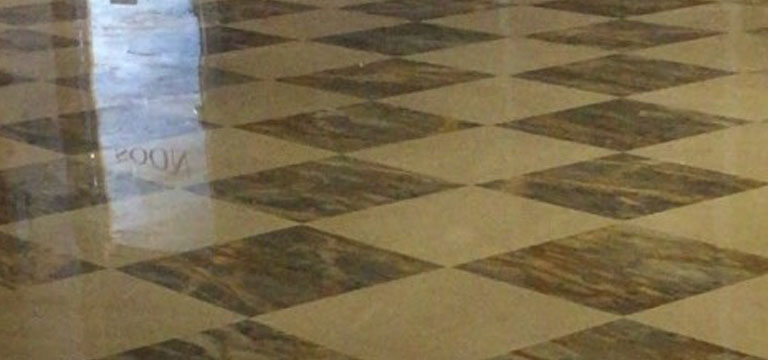Marble tiles do more than just look gorgeous when you use them in flooring. This stone is hardwearing, and has great insulating properties. Here, we offer some advice on keeping your marble-based floors looking amazing for longer.
<h3>Yellowing of marble floor tiles – why does this happen?</h3>
Iron, which can occur naturally in marble, is more often than not the culprit here. Thanks to oxidation, this metal can leak into the stone. This process is made quicker by exposure to water, bleach or other chemical agents, leading to stubborn yellow stains, whatever the quality of your marble.
Poor or infrequent cleaning and maintenance can also lead to this staining.
<h3>How can sealing marble help?</h3>
Polished or sealed marble is less likely to stain. And that’s because the sealing process has created a protective layer. This stops liquids and air from serving as a catalyst for iron leaching.
<h3>How else can I keep this yellow staining at bay?</h3>
If you have a good regular maintenance regime in place, that will really help. (Th/is essentially means frequent polishing and cleaning of the surface of your stone.)
Prevention is always better than cure! Among our tips would be steering clear of any acid-based cleaning products. These can ruin the sealed surface, so that air and liquid get into the stone. Alkaline products tend to work well. But never use anything abrasive – or any product containing bleach. (Because, quite apart from the leaching or iron, the bleach itself can turn white marble yellow.)
Use soft mops and brooms and micro-fibre cloths. This prevents superficial scratching. Thorough drying after marble cleaning is also important. And, although we always say this, it really matters – clear up liquid spills straight away. And that’s especially true of coffee, tea and red wine-related spillages.
Regular professional marble cleaning will also remove every last scrap of dirt while polishing the surface of your stone. Meanwhile, marble restoration provides full protection of your marble floors.
<h3>What about cleaning these stains?</h3>
Clearly, speed is of the essence. And, inevitably, the longer you leave a stain, the harder it will be to shift.
You can also try mixing a few drops of ammonia with 12% hydrogen peroxide to treat spot stains. This should bleach the yellow stain rather than. But proceed with care.
Alternatively, combine bicarb of soda and create a soft paste. Apply this to the stains and allow them to work for up to half an hour. Don’t rub or scrub. The bicarb should draw the stain from the tile. But you may need to repeat the process several times for it to be effective.
<h3>Talk to Royal Stone Care</h3>
Talk to us at Royal Stone Care, experts for marble restoration, cleaning and stain removal in London, in order to receive more information on marble care and stain prevention. We can also give you an informal, no-obligation quote for marble restoration at your premises.

